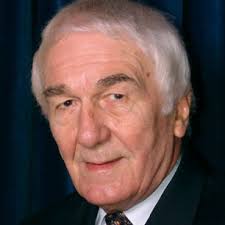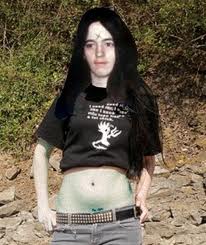January
1: Donna Douglas: Played daughter Elly May Clampett in The Beverly Hillbillies. (Age 82).
1: Mario Cuomo: Governor of New York (1983 to 1994) (Age 82).
2: James Cecil Dickens: Known as Little Jimmy Dickens, best known for his song May the Bird of Paradise Fly Up Your Nose. A longtime member of the Grand Ole Opry, also made appearances on Johnny Carson (Age 94).
2: Tihomir Novakov: Atmospheric scientist known for his research into a class of airborne particulates known as “black carbon”, contributing greatly to the theory of global warming (Age 85).
3: Bernice Madigan: At the time the oldest resident of Massachusetts, and the world’s 5th oldest living person before her death, died at age 115 in Cheshire, Massachusetts.
4: Bernard Williams: Producer of such movies as A Clockwork Orange and Flash Gordon. (Age 72).
5: Al Bendich: Civil rights attorney who defended poet Allen Ginsburg and comedian Lenny Bruce against obscenity charges. (Age 85).
6: Francesca Hilton: Daughter of Zsa Zsa Gabor and Conrad Hilton, lived in poverty toward the end of her life. Died of a stroke (Age 67).
7: The Editors and writers from Charlie Hebdo magazine: Jean Cabut (“Cabu”) (76), Elsa Cayat (54), Stephanne Charbonnier (“Charb”) (47), Philippe Honore (73), Bernard Maris (68), Mustpha Ourrad (60), Bernard Velhac (“Tignous”) (57), Georges Wolinski (80).
8: William Boeing, Jr.: son of the founder of Boeing Airlines (Age 92).
9: Samuel Goldwyn: Producer of many films since the mid-20th century, up to and including The Secret Life of Walter Mitty, produced two years ago (Age 88).
10: Robert Berner: Yale professor known for his modelling of The Carbon Cycle (Age 79).
10: Francis Simard: FLQ member, assassinated Quebec cabinet minister Pierre LaPorte in 1971, and sentenced to life imprisonmnent for murder (Age 67).
10: Taylor Negron: Stand-up comedian who played a key scene in Fast Times at Ridgemont High (Age 57).
10: Robert Stone: Author nominated twice for the Pulizer Prize, and once for the Faulkner Award. (Age 77).
11: Darrell Winfield: Was the Marlborough Man (Age 85).
12: Stephen Gold: Hacker and author. Known for hacking into the private information for Prince Philip. Acquitted on charges, since he did not get any material gain, nor was any sought (Age 58).
13: Mike Marqusee: Left-leaning humanitarian writer (Age 61).
13: Frank Mazzola: Editor of many blockbuster films, such as Rebel Without a Cause, Casablanca, and The Hunchback of Notre Dame (Age 79).
13: H. Wesley Kenney: Director for the sitcom All in the Family; Produced and directed many soap operas such as General Hospital, and The Young and the Restless (Age 89).
17: Don Harron: Canadian comedian, actor and author, best known for his “Charlie Farquarson” persona, as well as his role in the TV variety show Hee Haw as the news anchor for station KORN (Age 90).
18: Tony Verna: Inventor of the “instant replay” (Age 81).
20: Edgar Froese: Founder of the electronic music group Tangerine Dream (Age 70).
24: Toller Cranston: Canadian figure skater, Bronze medalist (1976 Olympics) (Age 65).
24: Joe Franklin: Longest running TV talk show host (10 years longer than Johnny Carson) (Age 88).
29: Bernice Gordon: Crossword puzzle writer for The New York Times. (Age 101).
29: Will McBride: Photographer and author of the controversial 1975 book Show Me! (Age 84).
29: Colleen McCulloch: Author best known for The Thorn Birds. (Age 77).
30: Rose Frisch: Discoverer of leptin. (Age 96).
February
5: Val Logsdon Fitch: Winner of the 1980 Nobel Prize in Physics. (Age 91).
8: Thom Wilson: Producer for Burton Cummings, Seals and Crofts, as well as punk acts such as The Dead Kennedys, Social Distortion, and The Adolescents. (Age 55). Note: Wilson’s age was hard to track down. IMDB.com provided his birth date, and calculator.net was used in obtaining his age (exact age at death is thus likely to be 55 years, 9 months and 24 days).
11: Bob Simon: Senior foreign correspondent for 60 Minutes and earlier 60 Minutes II. (Age 73).
12: Sam Houston Andrew II: Founding member and lead guitarist of the rock group Big Brother and the Holding Company. (Age 73).
12: Gary Owens: Radio and TV announcer. Best known for playing the radio announcer on Rowan and Martin’s Laugh-in. (Age 80).
14: Helen Glass: Saskatchewan nurse. Taught in Regina and Prince Albert. Contributed to the creation of the Canadian Health Act in 1984. (Age 97).
16: Leslie Gore: Singer of such hits as You Don’t Own Me, and It’s My Party. (Age 68).
20: Patricia Norris: Costume designer for movies such as The Elephant Man, and Scarface. (Age 83).
24: Maurice Hurley: Producer of Miami Vice, Baywatch and Star Trek: The Next Generation. (Age 75).
25: Harve Bennett: Writer/Producer for Star Trek, The Mod Squad, and The Six Million Dollar Man. (Age 84).
27: Leonard Nimoy: Best known for his role of Spock in Star Trek. He also was one of the lead characters in the series Mission: Impossible. (Age 83).
March
1: Daniel von Bargen: Appeared in sitcoms such as Seinfeld and Malcolm in the Middle. (Age 64).
3: Lynn Borden: Acted in movies in the 70s such as Bob & Carol & Ted & Alice, and Dirty Mary, Crazy Larry. (Age 77).
5: Albert Maysles: Documentarian best known for his documentaries Gimme Shelter and Grey Gardens (Age 88).
8: Lew Soloff: Played trumpet for the 70s rock group Blood, Sweat and Tears. (Age 71).
9: Lou Silverstone: Comedy writer. Listed as one of the “Usual Gang of Idiots” in Mad Magazine between 1962 and 1990. (Age 90).
11: Jimmy Greenspoon: Played in the rock group Three Dog Night. (Age 67).
12: Sir Terry Pratchett: Author of comic fantasy novels. (Age 66).
15: Mike Porcaro: Played bass for the rock group Toto. (Age 59).
16: William Ewald Jr.: Speechwriter for Dwight Eisenhower and historian. (Age 89).
19: Michael Brown: Singer (The Left Banke) and songwriter (Walk Away Renee). (Age 65).
21: Alberta Watson: Canadian actress (The Sweet Hereafter). (Age 60).
26: Tomas Transtromer: Winner of the 2011 Nobel Prize in Literature. (Age 83).
28: Richard Bare: Producer of the sitcom Green Acres. (Age 101).
28: Gene Saks: Directed the original Broadway play The Odd Couple. (Age 93).
28: Tuti Yusupova: World’s oldest person (unverified at this writing). Claimed to have been born on 1 July 1880 in Imperial Russia. (Age 134).
April
1: Misao Okawa: World’s oldest confirmed person, Japan. (Age 117).
13: Gunter Grass: Nobel Prize-Winning author of The Tin Drum and other books. (Age 87).
May
2: Ruth Rendell: Known for the Inspector Wexford series. (Age 85).
4: Michael Blake: Author of Dances With Wolves. (Age 69).
June
9: Vincent Bugliosi: Prosecuting attorney in the Charles Manson case, and author of Helter Skelter. (Age 80).
July
21: E. L. Doctorow: Author of Ragtime. (Age 84).
28: Ann Rule: True crime author. (Age 83).
August
30: Oliver Sacks: Nerologist and author (Age 82).
30: Wayne Dyer: American motivational speaker and self-help writer. (Age 75).
September
10: Basil Johnston: Author and Historian for the Chippewas of Nawash First Nation on the Bruce Penninsula in Ontario. (Age 86).
19: Jackie Collins: American best-selling author (Age 77).
October
3: Barbara Meek: Played Ellen Canby in the early 80’s sitcom Archie Bunker’s Place. (Age 81).
5: Larry Brezner: Producer of such comedy films as Good Morning Vietnam, and Throw Momma From The Train. (Age 73).
5: Andrew Rubin: Acted in comedic movies such as Police Academy, and comedic sitcoms such as Mary Hartman, Mary Hartman. (Age 69).
5: Henning Mankell: Author who contributed to the “Nordic Noir” genre of crime novels. (Age 67).
6: Billy Joe Royal: Pop singer (Cherry Hill Park, among others). (Age 73).
6: Otto Tucker: Newfoundland heritage activist and educator. (Age 92).
10: Richard Heck: American chemist who shared the 2010 Nobel Prize in Chemistry with Japanese chemists Ei-ichi Negishi and Akira Suzuki. (Age 84).
10: Wesley Funk: Saskatchewan novelist and teacher. (Age 46).
14: Eric Wright: Canadian Crime Novelist. (Age 86).
20: Cory Wells: Original lead singer of the 70s band Three Dog Night. (Age 74).
25: Lee Shaw: Known as “The First Lady of Jazz”. (Age 89).
29: Kenneth Gilbert: Actor who performed in the series Doctor Who. (Age 84).
30: Al Molinaro: Played a police officer in The Odd Couple. Appeared in other 70s sitcoms such as Happy Days, and Joanie Loves Chachi. (Age 96).
31: David Shugar: From his arrest in Canada in 1946 for trading state secrets with the Russians to his becoming professor of biophysics and being inducted to the Royal Society of Canada in 1999. For the record, he was found innocent of all charges in 1946. (Age 100).
November
5: George Barris: Designer of the original Batmobile in 1966. (Age 89).
7: Eddie Hoh: Drummer for The Mamas and the Papas, and a studio drummer for Stephen Stills, The Monkees, Donovan, and others. Led a secluded life after 1970. Died in Westmont, Illinois, a half hour’s drive west of Chicago. (Age 71).
9: Andy White: Susbstitute drummer for Ringo Starr for The Beatles’ first single Love Me Do. Affectionately called the Fifth Beatle. Had no further performances with them since. (Age 85).
10: Allen Toussaint: Arranger, producer, songwriter (Working in a Coalmine, Southern Nights). (Age 77).
15: P. F. Sloan: Songwriter for Barry MacGuire, Jan and Dean, Herman’s Hermits, The Mamas and the Papas. (Age 70).
19: Ron Hynes: Newfoundland singer/songwriter. Wrote Sonny’s Dream, covered by many artists worldwide (Age 64).
21: Gil Cardinal: Canadian filmmaker and documentarian. (Age 65).
22: Albert Pick: German banknote collector. Wrote the first reference book for world bank notes, and it remains the standard. (Age 90).
23: Douglass North: Winner of the 1993 Nobel Prize in Economics, alongside Robert Fogel (1927-2013). (Age 95).
25: Elmo Williams: Editor and producer in American cinema. Won an Oscar in 1953 for his editing work in the movie High Noon.
December
2: Sandy Berger: Clinton advisor in the early 90s (Age 70).
4: Scott Weiland: Front man for Stone Temple Pilots (Age 48).
5: Chuck Williams: Founder of Willliams-Sonoma, an upscale kitchen shop known for its innovation (Age 100).
6: Marque Lynche: Former Mousketeer; played in The Lion King in Broadway, and American Idol finalist (Age 34).
6: Holly Woodlawn: Transgender actress and Warhol contemporary. Written about in Lou Reed’s hit song Take a Walk On the Wild Side. (Age 69).
7: Martin E. Brooks: Played in many television drama serials in the ’70s and ’80s: McMillan and Wife, General Hospital, Knots Landing, and Dallas. (Age 90).
15: Harry Zvi Tabor: Israeli physicist, brought solar power to the Middle East. (Age 98).
16: Snuff Garrett: Record producer. Produced hits for Sonny and Cher, Vicki Lawrence, Bobby Vee, Del Shannon, Buddy Knox, and many others. (Age 76).
22: Billy Glaze: Accused and convicted serial murderer; died in prison before DNA evidence would have exonerated him. (Age 72).
22: Carson van Osten: Creator of many Disney Comics. (Age 70).
23: Michael Earl: Puppeteer who brought Snuffalupagus to life on Sesame Street. (Age 56).
24: William Guest: Cousin of Gladys Knight, R&B/Soul singer who performed with Gladys Knight and the Pips. The group were inducted into the Rock and Roll Hall of Fame in 1996. (Age 74).
25: Robert Spitzer: Psychiatrist known for being a major force in the creation of the DSM. Has been called one of the most influential psychiatrists of the 20th century. (Age 83).
25: George Clayton Johnston: Writer of modern sci-fi/futuristic classics such as Logan’s Run, Oceans 11, and The Twilight Zone. (Age 86).
27: Haskell Wexler: Influential cinematographer, known for the production of movies like: Who’s Afraid of Virginai Woolf?, One Flew Over the Cuckoo’s Nest, and Bound for Glory. (Age 93).
28: Ian Frazier Kilmister: Known as “Lemmy”, founded and led the heavy metal group Motorhead. (Age 70).
Visits: 111
Like this:
Like Loading...


 This is the first article in a series on Order of Canada (OOC) recipients that carry some cachet in Canadian popular culture.
This is the first article in a series on Order of Canada (OOC) recipients that carry some cachet in Canadian popular culture.






 You know, I was minding my own business in this classy Chinese restaurant, engorging myself on their copious buffet, had my fill, and was handed the bill with an accompanying fortune cookie.
You know, I was minding my own business in this classy Chinese restaurant, engorging myself on their copious buffet, had my fill, and was handed the bill with an accompanying fortune cookie.